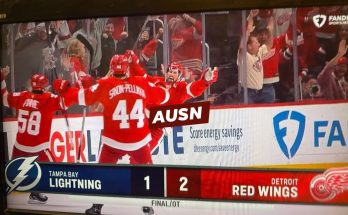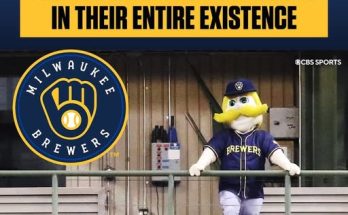Tonight, We’re at the Game: The Invisible Battle Off the Ball
Tonight, we’re at the game. The scoreboard ticks, the crowd roars, and the bright lights illuminate the court, but what most spectators don’t see is the war raging beneath the surface — the grueling physicality and tactical battles off the ball. It’s here that the game is truly won or lost, in those moments and spaces between possession, where one player tries to break free, only to be held back, fouled, and maimed by opponents desperate to neutralize her threat.
She is the star of the team. The one they rely on to score, to create, to lead. Yet tonight, she is a prisoner of the defenders who shadow her relentlessly, their hands grabbing at her jersey, their bodies shoving and holding, their arms reaching in with repeated fouls that barely earn whistles. The referees seem hesitant, or overwhelmed by the pace, and so the game becomes a test of endurance and patience.
Everyone watches the ball, but the game is so much more than that. Plays off the ball—cuts, screens, positioning—are where the chess match happens. It’s where players create opportunities, openings, and the chance to take that crucial shot. But for her, these moments have become moments of frustration.
The defenders are not just guarding her on the ball, they are sticking to her like glue off it. Every attempt she makes to break free and receive a pass is met with a wall of hands and bodies. She tries to shake loose, to create space, but they are there first, anticipating, ready to intervene. There is no clean separation, no moment of calm; every movement is met with contact, with resistance, with obstruction.
This relentless holding is more than physical—it’s psychological. Each time she is denied the ball, denied the chance to execute, her frustration grows. Her normally confident game is peppered with hesitation and impatience. The sharpness of her instincts dulls under the weight of constant interference.
The Physical Toll: Fouls That Go Uncalled
Fouling off the ball is an old, well-known tactic, but it’s illegal for a reason. It disrupts the flow of the game and impedes the offensive player’s ability to perform. Tonight, the defenders take full advantage of the referees’ leniency or inattention, using their bodies and hands to maul her, to hold her in place, to disrupt her rhythm.
Each foul chips away at her. It’s hard to maintain intensity when your body is constantly being pulled, pushed, or grabbed. The stinging contact adds a layer of pain that goes beyond bruises and sore muscles. It seeps into her focus, her confidence, her desire to fight back.
You can see it in her eyes—clear frustration, an edge of anger, a flash of helplessness. She’s no stranger to tough defense, but this is different. This is not just a battle of skill, but a battle of willpower. And she’s fighting an uphill war.
The Role of the Coach: Leadership Beyond Strategy
Amid this relentless physicality, the coach’s role becomes critical. The coach must see what the crowd and officials often miss. They must recognize the unfair treatment their star player is enduring and respond decisively.
Coaches don’t just draw up plays—they manage emotions, they advocate for their players, they protect them in the trenches. When referees fail to call obvious fouls, when the opposition uses illegal tactics to slow the game and frustrate the offense, it’s up to the coach to fight back.
The coach needs to step up in several ways.
First, they must adjust the game plan to alleviate pressure. This might mean more off-ball movement from other players to draw defenders away, setting screens to free their star, or increasing ball movement to prevent double-teams. Creative offensive sets that don’t rely solely on one player’s ability to break free can reduce the burden.
Second, the coach needs to vocally advocate. They must communicate strongly with referees, calling attention to fouls and demanding fairness. This requires a balance—assertiveness without disrespect—but it’s crucial to protecting the integrity of the game and the safety of the players.
Third, the coach must manage the player’s mindset. They need to recognize the frustration in her eyes and channel it constructively. A calm halftime speech or a quiet word on the bench can remind her of her strengths, of the bigger picture beyond the physical battles. Emotional support can reignite confidence and focus.
Finally, the coach should prepare the team physically and mentally for the toll of such games. Conditioning, resilience training, and strategies for coping with tough defense must be part of regular practice, so that players are ready when the stakes are high and the battles fierce.
The Impact on Team Dynamics
When a star player is locked down so tightly, the entire team feels the impact. Teammates may become hesitant to pass the ball to her, afraid that she will be stripped or pressured. The offense can stagnate as the team struggles to find alternative routes to score.
Yet this challenge can also unite the team. They can rise to support their teammate by increasing their own movement, setting off-ball screens, and demanding the ball more often. When the coach inspires this collective effort, the team becomes more dynamic and harder to defend.
In this way, the frustration caused by such tight defense can be a catalyst for teamwork and growth. The star player is not alone—her teammates are there to fight alongside her, to create opportunities, and to share the load.
The Broader Game: A Microcosm of Sport and Life
This intense game is more than just basketball. It’s a microcosm of competition, resilience, and fairness. It’s a reminder that not every battle is fought openly, and sometimes the biggest struggles are the ones you don’t see.
The physicality off the ball—the holding, the fouling, the mauling—may not make the highlight reels, but it shapes the outcome just as much as a three-point shot or a slam dunk. It tests the character of players, the wisdom of coaches, and the integrity of officials.
In sports, as in life, the invisible battles can be the hardest. They require courage, perseverance, and support from those around us. The star player tonight embodies that struggle—the fight to break free, to be seen, to succeed despite the odds.
Conclusion: The Coach Needs to Act
Tonight, as the game unfolds under the bright lights, it is clear: the coach needs to act. Not just as a strategist, but as a protector and leader. They need to shield their star from the relentless physicality, advocate for fair play, adjust tactics, and inspire their team.
The plays off the ball may go unseen by many, but they are no less important. They define the flow of the game, the momentum of the team, and the spirit of competition. If the coach rises to this moment, they can change the course of the game—not just by the Xs and Os on the board, but by the heart and courage they bring to the court.
Tonight, the game is more than a contest of skill. It’s a test of will, of fairness, and of leadership. And the coach needs to be ready.



